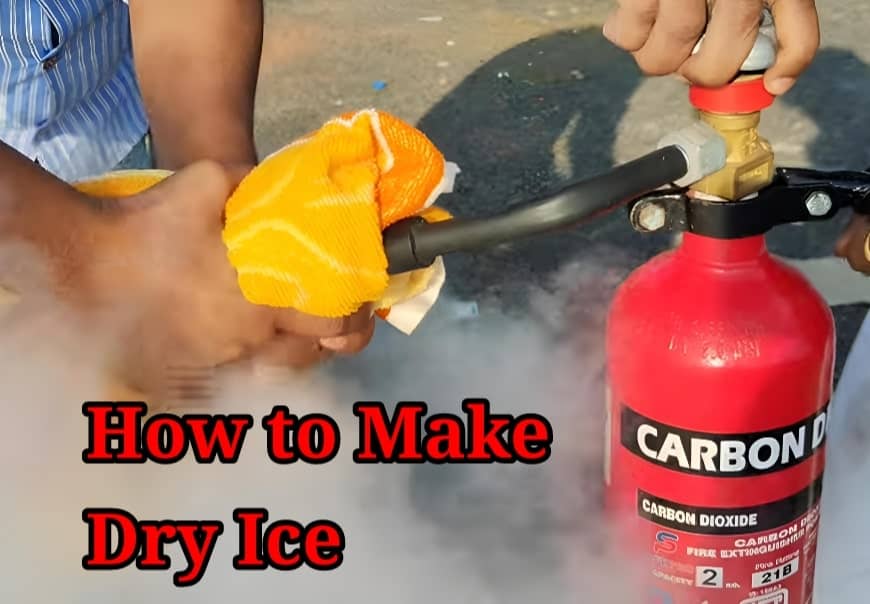Are you familiar with the name dry ice? If you are not familiar then get familiar from this post today. Today in this post you will know what is dry ice, how it is made and what are its uses. In today’s age of science, we use many types of chemicals for various purposes. Such a chemical thing is this dry ice. Let’s see how to make Dry Ice at home?
What is Dry Ice?
Solid carbon dioxide is essentially dry ice. We usually make ice by cooling water. Just as water i.e. H2O turns into ice in the solid state, CO2 turns into ice on supercooling. Dry ice has a temperature of about -78.5°C. It is very cold making it dangerous to handle without gloves. This can lead to frostbite on the hands.
Just as ice melts into water, dry ice does not melt into liquid, that is why it is called dry ice. Dry ice turns directly into vapor.
How to Make Dry Ice at Home?
If you want to make dry ice at home, follow the step by step guide given below.
Equipments:
- Carbon dioxide gas cylinder.
- A cloth bag that allows air to circulate.
- Hand gloves


Collection of Equipments:
- Carbon dioxide is primarily used to extinguish fires. You can see it in any school college, office or bus train, plane inside the red mini cylinder. You can also buy CO2 cylinders online.
- Buy any mini bag from online.
- Buy or store a pair of thick cotton hand gloves.
Making Dry Ice:
- Step 1: First put on hand gloves.
- Step 2: Take the CO2 cylinder and place the cotton bag tightly over its mouth through which the CO2 will escape.
- Step 3: Then open the CO2 cylinder to allow the carbon dioxide to escape. Be sure to let the CO2 escape through your bag.
- Step 3: After some time close the cylinder and check the dry ice in your bag.

Thats how you can make Dry Ice easily.
We already know that the solid form of CO2 is dry ice. CO2 is liquid in the cylinder at high pressure. When you open the cylinder it comes out as a vapor. But as it exits, it cools down to about -78.5°C, which is the solid form of CO2. By now, much of the CO2 is not vaporized but turns into a solid we know as dry ice.
Do you want to know how to make English Breakfast Tea?
Uses of dry ice:
1. Storage and Transportation:
- Food preservation: Used to preserve ice cream, meat, fish, and dairy products. Drug and Vaccine.
- Transport: This is especially useful for storing temperature-sensitive drugs or vaccines.
2. Industry and Cleaning:
- Dry Ice Blasting: Used in industry for cleaning machine parts.
- Used for cleaning electronics and medical equipment.
3. Entertainment and Special Effects:
- Used to create artificial fog for stage or cinema.
- Used to create fog like smoke in various parties or events.
4. Agriculture and Pesticide Use:
- Dry ice is used to preserve crops and kill insects.
5. Research and Science Experiments:
- Used in various laboratory tests, such as cold temperature response tests.
6. Production of carbonated beverages:
- Used to supply carbon dioxide to make soda and carbonated drinks.
From now on, instead of buying dry ice from outside at a high price, make it yourself at home. If you want to know how to make carbon dioxide, you can also tell us in the comments. Then I will show you how to make carbon dioxide. And of course you can bookmark our website to get such posts.
FAQ: Can I make dry ice without carbon dioxide (CO2)?
No. It is not possible to make dry ice without carbon dioxide (CO2) because dry ice is the solid form of carbon dioxide. Dry ice doesn’t mean anything else.

One thought on “How to Make Dry Ice at Home: step by step Guidelines.”